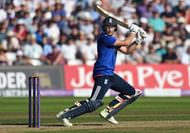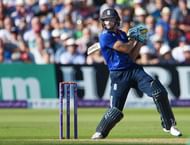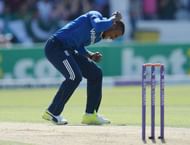A couple of years ago, after England failed to win yet another 50-over World Cup, despite having appeared in all eleven editions of it, there was a big question to be raised. The question wasn’t about their inability to win a World Cup despite being the fathers of the game. Rather, it was about the importance that they paid to the shortened version of Test cricket.
While England’s home season is one of the most awaited cricketing events not just in the United Kingdom, but also all over the world, it is anybody’s guess that Test cricket gains prime importance throughout the season and the limited-overs matches only come after that. A small example to elucidate England’s negligence of 50-over cricket can be the list of their top run-getters in ODIs.
Only two of their top ten ODI run-getters have scored more than 5000 runs, despite having played in excess of 150 games. None of them average above 40 in ODIs, while the record for the maximum number of ODI centuries lies with Marcus Trescothick who has scored 12 centuries in 123 games. Whereas in Tests, the top 21 run scorers for England have all scored more than 5000 runs and 17 of those 21 average in excess of 40.
However, this attitude has seen a shift since their last World Cup debacle, in the aftermath of which, England completely transformed themselves, and within a short period of two years, they’ve become one of the sides to beat in ODI cricket. Here, we take a look at the reasons why this current England team could go on to be world-beaters in international cricket.
#1 Solid opening partnership

Since the departure of Alastair Cook from England’s ODI setup after the limited-overs series against Sri Lanka in December 2014, Alex Hales and Jason Roy have given a new dimension to the way England open their innings in ODIs. From the 14 innings in which Hales and Roy opened together for England in 2015, six times an opening partnership of 50 or more was raised, while three times out of those six, the partnership was carried beyond 100 runs.
Fast forward to 2016 and the opening sojourn has continued for England as Hales and Roy have scaled even newer heights. While the duo could put up just one 50+ stand during the away ODI series in South Africa, the batsmen made up for it with an all-time highest opening stand for England in ODIs, when they put on 256 runs in the 2nd ODI vs Sri Lanka in 2016, and helped England chase down the target of 255 runs with 10 wickets in hand.
Their combined efforts kept aside, the individual forms have been no less brilliant. Hales broke the record for the highest individual score by an England batsman in ODIs, when he scored 171 against Pakistan in the 3rd ODI in Nottingham, wherein England also broke the record for the highest team total in ODI cricket by scoring 444/3. Since the 2015 World Cup, Hales has scored 6 half centuries and 4 centuries in 28 innings.
Roy, on the other hand, since his debut in May 2015, has scored 968 runs from 29 ODIs at 37.23 and a strike-rate of 105.33 including 3 centuries and 4 fifties. The solidity that these two have provided at the top of the batting order has played a major role in England’s ascendancy in ODI cricket.
#2 Joe Root’s consistency
Career statistics of 3017 runs from 78 ODIs at 45.71 and a strike-rate of 85.71 with 8 hundreds speak of a blossoming career. And a player of Joe Root’s calibre deserves such numbers and the accolades that come with it. If we only focus on the records since the 2015 World Cup, Root has scored 4 centuries and 9 fifties from 23 innings. Only 9 times out of 23 has he scored less than 40 runs in an innings and has been dismissed for a duck only once.
Such staggering stats and that too for a limited sample space exemplify the consistency of England's No. 3 in ODI cricket. Root’s last 10 scores in ODIs have been 9, 30, 85, 89, 61, 93, 65, 11*, 2, and 27. The bulk of the scoring done by England’s prime batsman has eased the pressure and has allowed the middle-order to bat freely, be it in the first innings or while chasing a target.
Since the 2015 World Cup Root has scored 1215 runs from 23 innings at an average 52.82, which is amazing. When you have a No. 3 who is scoring a fifty almost every other match, you are bound to succeed. And that’s exactly what has happened with England, and can happen in the future too.
#3 Jos Buttler’s outrageous hitting
Not too long ago Jos Buttler's place in the Test squad was being questioned. Eventually, he lost his place in the Test squad after a few not-so-good performances. But, the way he made up for it in limited-overs cricket has made him a trump-card for the side. The record holder for the fastest fifty and the fastest hundred for England in ODIs has become the most dangerous batsman in England’s current ODI batting line up.
The fact that all four of his ODI hundreds have come at a strike rate in excess of 100 runs per 100 balls, which makes his career strike-rate stand at 120.32, speaks about the prowess that the wicket-keeper batsman has with the willow. In the record-shattering game at Nottingham against Pakistan, wherein England broke the record for the highest team total in ODI history, Buttler also made the fastest fifty by an Englishman in ODIs, off just 22 balls.
Previously, in November 2015, Buttler had also made his own the record for the fastest hundred by an England batsman in ODIs when he hit a ton off just 46 balls against Pakistan in Dubai. His ten innings since that knock of 116 off just 52 balls read 105, 48*, 0, 1, 0, 93, 17*, 70, 4, and 90*. And, none of his double-digit scores since then have come at a strike-rate of under 100.
Such outrageous skills with the bat are bound to propel any team’s chances in 50-over cricket, and England are no exception.
#4 Flurry of all-rounders
Much like the West Indies in T20 cricket, England have nurtured and put in place as many as nine men who can bowl and bat in a single lineup. Out of these nine, at least five do that on a regular basis and are genuine all-rounders. The likes of Ben Stokes, Chris Woakes, Moeen Ali, Liam Plunkett and David Willey play together most of the time for England and form a formidable pool of genuine all-rounders.
The ODI strike-rates of the batsmen mentioned above are 94.05, 82.32, 97.69, 99.10 and 75.00 respectively. In that very order, their bowling averages are 37.56, 33.70, 42.00, 34.03 and 30.31. And, to clear the air about the sample space that is being taken into consideration, the least number of games that have been played by any individual among these five is 20, played by Willey.
Woakes and Plunkett helped England tie the first ODI against Sri Lanka in 2016, Stokes has been the lynchpin of the side since his Ashes heroics and World T20 blitzkriegs, and Moeen Ali has proved out to be a more than effective partnership breaker in limited-overs cricket. These men have turned England into a team of dangerous all-rounders and are expected to help their side progress in the future as well.
#5 Good death bowling
With the balance being shifted in the favour of the batsmen in limited-overs cricket with each passing day, being a bowler has become one of the toughest jobs in cricket, and the bowlers have been reduced to a mere liability instead of being an obligation. In such testing times, England possess a bowling attack that can restrict the flow of runs and pick up wickets at the minimum of expenses.
David Willey has a got a good yorker and is capable of squeezing out the most out of the death overs, and so does Chris Jordan. Woakes and Stokes are equally good with the new ball as well as with the old ball. The slower deliveries that Plunkett possesses have foxed many a batsmen since his return to the ODI scenes.
It must not be construed, however, that England do not leak runs at the death. They do, but the returns that the English bowlers get at the end of the 50 overs are better than most other sides. While defending big totals, when the attack is under pressure, as the oppositon comes at them all guns blazing, England have had the calmness to take things over by over and get the important breakthroughs.
Out of the 7 games that England played batting first after the World Cup of 2015, they managed to win 4. They have won 4 and lost 4 while defending targets in 2016. These returns are decent, if not very impressive, as far as modern-day limited-overs cricket is concerned.
Follow IPL Auction 2025 Live Updates, News & Biddings at Sportskeeda. Get the fastest updates on Mega-Auction and cricket news





